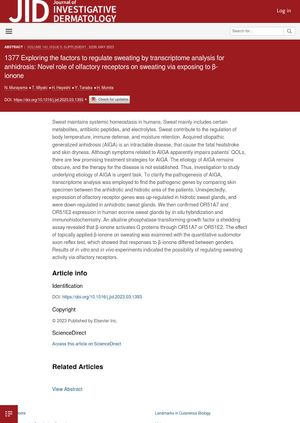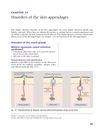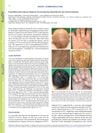Exploring the Factors to Regulate Sweating by Transcriptome Analysis for Anhidrosis: Novel Role of Olfactory Receptors on Sweating via Exposing to Beta-Ionone
April 2023
in “
Journal of Investigative Dermatology
”

TLDR Sweating can potentially be controlled through olfactory receptors, with β-ionone playing a key role, and responses may vary between genders.
The study conducted by N. Murayama, T. Miyaki, and H. Murota from Nagasaki University Graduate School of Biomedical Sciences and Sasebo City General Hospital, Japan, aimed to understand the pathogenesis of Acquired Idiopathic Generalized Anhidrosis (AIGA), a disease that impairs sweat production and can lead to fatal heatstroke and skin dryness. Using transcriptome analysis, they compared skin samples from anhidrotic (non-sweating) and hidrotic (sweating) areas of patients. They found that the expression of olfactory receptor genes was up-regulated in hidrotic sweat glands and down-regulated in anhidrotic sweat glands. Specifically, they confirmed the expression of OR51A7 and OR51E2 in human eccrine sweat glands. They also discovered that β-ionone activates G proteins through OR51A7 or OR51E2, and the responses to β-ionone differed between genders. These findings suggest the possibility of regulating sweating activity via olfactory receptors.

